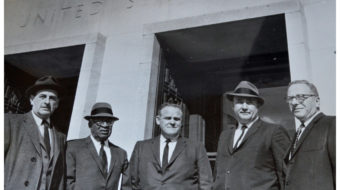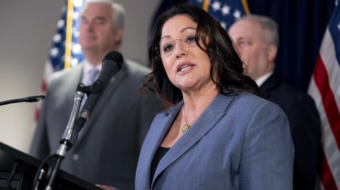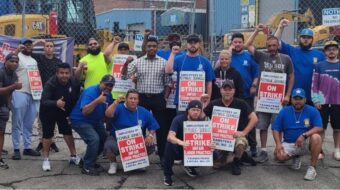The announcement June 6 that the jump in the unemployment rate is the worst in more than a generation resulted in a few corporate analysts admitting we are now in an economy that has probably “stalled.” Workers know that what Wall Street apologists are describing as a stall is nothing less than a disaster.
Jobs fell by 49,000 in May after a 28,000 drop in April, according to the U.S. Department of Labor. The unemployment rate increased to 5.5 percent, the fifth straight month in a row that jobs decreased. Keep in mind that it takes 130,000 or more new jobs a month just to absorb new people into the labor market.
The government figures admit to 7,626,000 “unemployed.” That’s where they get the 5.5 percent figure. They don’t include in that percentage the 5,220,000 they admit are “underemployed,” the 1,414,000 they admit are “discouraged” and no longer seeking jobs or the 6,634,000 who are underemployed, discouraged and out of the pool of those eligible for unemployment insurance. That brings the total unemployment figure to 14,260,000 according to figures compiled by the House Ways and Means Committee. Even the 14 million plus figure doesn’t tell the real story because there are many millions who have never found a first job and are not included in any of the above categories.
Among African Americans, unemployment rates are even worse. There is one job for every two people who are seeking work. Again, that figure only applies to all those who are still eleigible to collect unemployment insurance.
The corporate analysts might be able to get away with describing the disaster as only a “stall” in the economy if jobs was the only issue involved. In reality it is only one of the more visible aspects of the crisis workers face.
The second part of the disaster is that for 30 years wages have been evaporating. They have not kept pace with productivity. “Salaries continued to shrink in May,” the New York Times reported, “after adjusting for inflation.”
The third part of the disaster is the out-of-control increases in everyday costs of everything from basic foodstuffs to fuel.
The fourth part of the disaster, as if tanking jobs, shrinking wages, and spiraling costs were not enough, is the home equity and affordable housing and mortgage crisis. That worsens daily. Is this a temporary “stall” or is this a “disaster?”
Republican presidential candidate John McCain answered the question this way on June 6: “I have a great belief that the fundamentals of the economy are very strong. Very strong.”
He said this despite the fact that only a day earlier the Federal Reserve said home equity dropped to 46.2 percent in the first quarter of this year, a level not seen since World War II. While this is going on, homeowner mortgage debt is rising through the ceiling.
The Associated Press reported last week that homeowners have lost almost half-a-trillion dollars in home equity over the last quarter and that this has been going on for four quarters. Mortgage debt has risen by coorespondingly similar amounts.
While the Republicans would like us to believe all of this is due to “cyclical” or “random” events workers know better.
The upsurge we see around the elections is because millions understand the disaster is the result of failed policies by the Bush administration obeying its corporate bosses and funders – the very same people who are telling McCain what to do and who are funding his campaign.
Millions of workers understand that since Bush took office the country has lost 3.3 million manufacturing jobs. It would have taken the addition of 10 million jobs just to keep pace with the growing workforce.
Millions of workers understand that since the late 1990’s incomes fell by 2.5 percent for those in the bottom fifth of the income scale and rose almost 10 percent for those in the top fifth. Meanwhile, the rich in the top 1 percent got half of the overall economic growth between 1993 and 2006. (AFL-CIO figures)
Still, after all this, McCain is offering only the following two part economic plan: First, he wants a massive corporate tax cut from 35 percent to 25 percent, with 58 percent of the benefits going to the top 1 percent of taxpayers – an even larger tax cut for the rich than Bush gave them. Second, he proposes to tax health care benefits received by workers. Its almost as if he lives on another planet and needs a reality check.
For him, the reality check should come in November.









